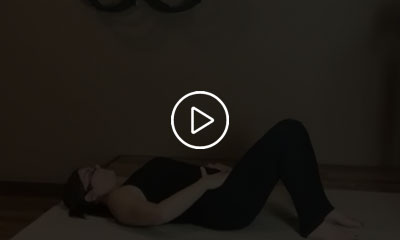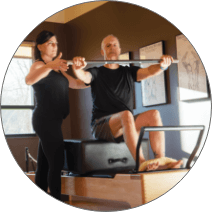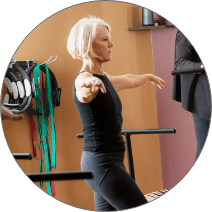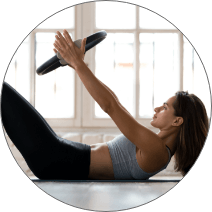Starting off with the basics — neutral pelvis
In all of our Mindful Movement programs, there is a common theme of a neutral pelvis. We believe strongly in protecting and honoring the natural curves of your spine. Keeping a neutral spine protects the integrity of the body’s alignment for optimal movement of your body. When you have a neutral pelvis, every joint can be optimal for equal distribution of force through your entire body. It makes your body as efficient as it can be while you are moving. Learning where your pelvis is and how to carry it in your everyday activities will help you improve your function, posture, and breathing patterns.
Don’t Be Stuck In A Tuck

The tucked pelvis (also known as “the tuck”) is a way to hold the lower body while exercising, standing, or sitting. Driving the hips under, with or without engaged gluteal muscles will compress the anterior (front) spine, grip the abdominal muscles (which inhibits breathing and puts stress on the nervous system). These movements create instability in the pelvic floor and potentially lead to aggravation and inflammation in the low back, sacrum, and hips.
The tuck encourages static flexion of the spine, which can translate to bad posture in daily life. Spending too much time in held spinal flexion puts unnecessary pressure on the spine’s vertebrae and discs. If you are standing or sitting, your tailbone should be in a neutral position (“untucked”) and behind you. While you should not over-arch your low back, you also should not tuck your hips under and make your low back straight or rounded. There should be a natural curve in the low back.
While there are times we will coach a “tucked pelvis,” we train the body to move in and out of movement from a neutral to a tucked pelvis to help enhance natural lumbopelvic rhythm in the body.
- Living in a “tucked” pelvic position can chronically “tighten” glutes, eventually leading to lower back pain.
- You have to breathe. If you want the core to work properly (emphasis on transverse abdominis, diaphragm, and pelvic floor), this system should move. Feel it open and expand as you inhale, close, and contract as you exhale.
- While “tucking” your pelvis may help you “feel the burn” or make your abdomen look “flatter,” it is not a natural position for your body. When you keep your body in an unnatural position, it will eventually show up as back pain, pelvic floor dysfunction, knee pain, neck pain, etc. Natural posture with natural bellies is not all flat abs and six-packs! We often have a little roundness. Can we celebrate that, please?






